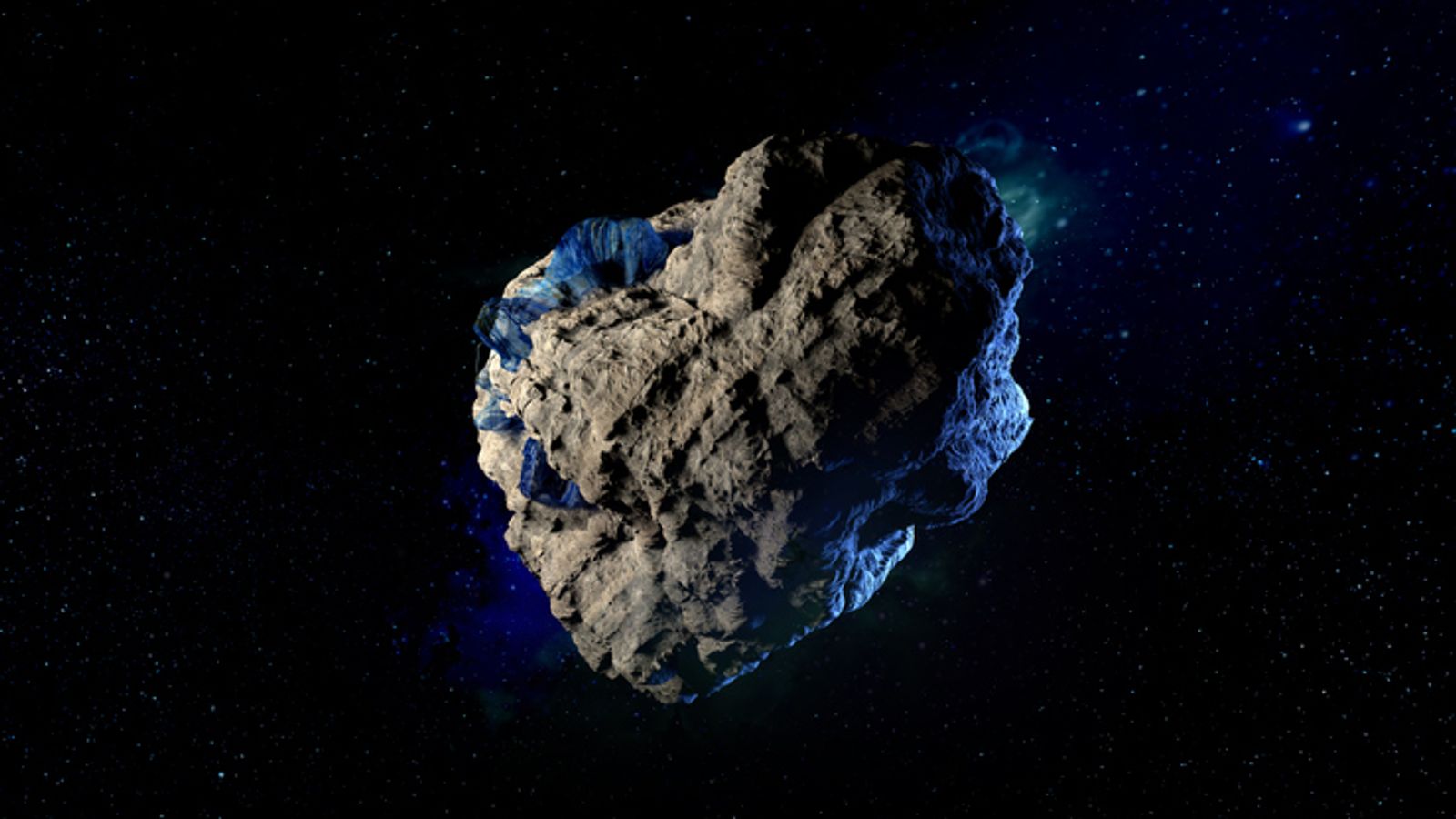An asteroid is due to come very close to Earth this week, passing just a few thousand kilometres above the planet’s surface.
The relative near miss will be streamed live using robotic telescopes – here’s what you need to know about the asteroid and how you can watch it.
What do we know about this asteroid?
The asteroid was first spotted on 21 January and has been named asteroid 2023 BU.
It is due to whizz past Earth shortly after midnight on Friday 27 January.
When it passes by at its closest point it will be 3,500km above Earth’s surface. That’s less than 3% of the average distance between the Earth and the moon.
It may sound like a long way, but this asteroid will be the fourth closest to pass by Earth since records began.
By comparison, most satellites orbit at an altitude of more than 35,000km.
Should I be worried about the asteroid crashing to Earth?
In short, no. The asteroid is between 3.8 and 8.4 metres in size – small enough to incinerate on entering Earth’s atmosphere.
Apparently it’s roughly the size of an elephant.
According to NASA, asteroids smaller than 25m are likely to burn up, leading to little or no damage on the ground.
Read more from Sky News:
Strange new secret about Earth’s inner core
Ants can ‘sniff out cancer in urine’
What is the Doomsday Clock and how does it work?
How can I watch the asteroid pass close to Earth?
The Virtual Telescope Project will be broadcasting the close encounter live from 7.15pm on Thursday 26 January.
Astronomer Gianluca Masi will be hosting a free livestream on the project’s website and YouTube channel.
The Virtual Telescope Project is run by the Bellatrix Astronomical Observatory in Italy and consists of several robotic telescopes that are accessible online.
What is an asteroid?
An asteroid is a “relatively small, inactive body orbiting the Sun”, according to NASA. It’s normally made of rocky, dusty, and metallic materials.
Most orbit within the main asteroid belt, between the orbits of Mars and Jupiter, but some follow paths that circulate into the inner solar system (including near-Earth asteroids).
A NASA website displays the next five asteroid approaches expected near Earth, showing how they are typically extremely far away. Sizes of asteroids range from around the footprint of a house, to a bus or plane.








